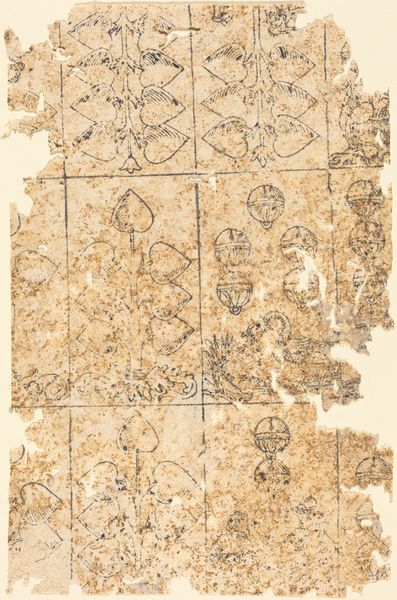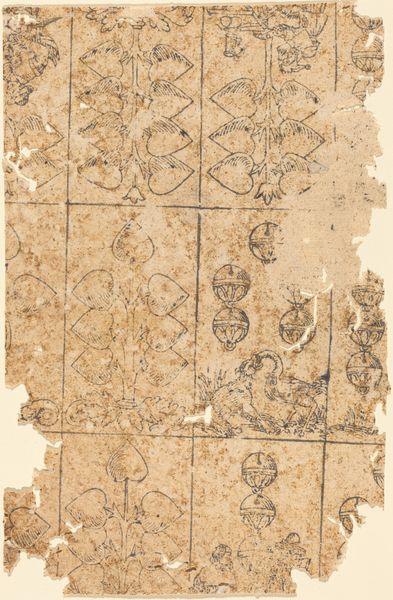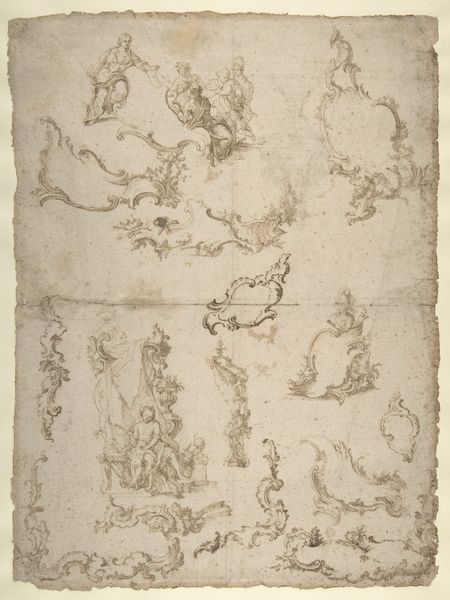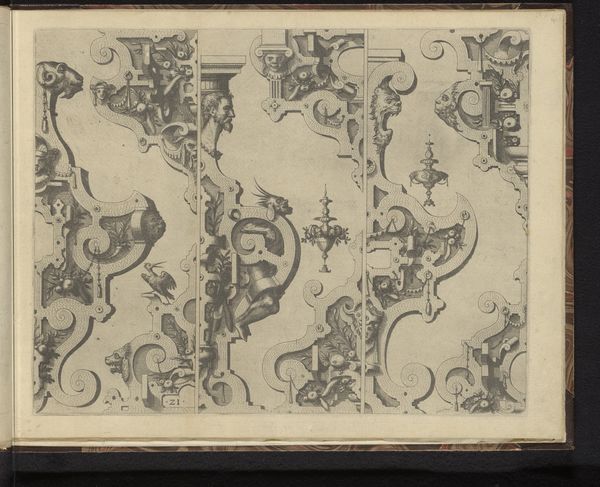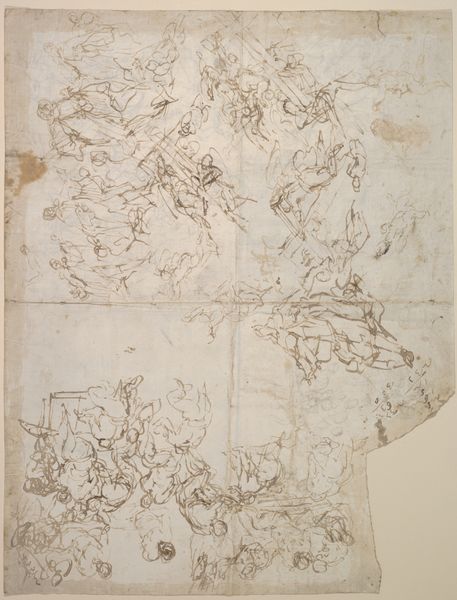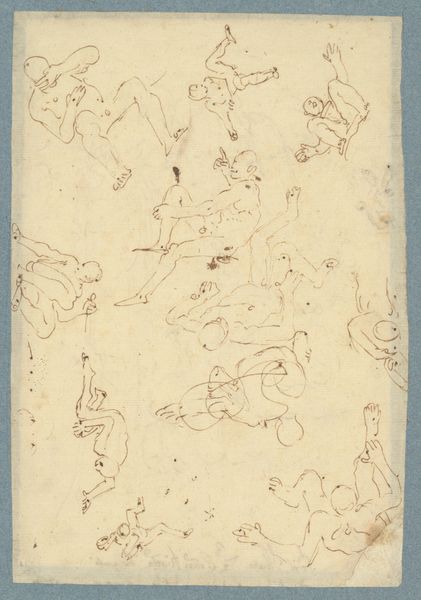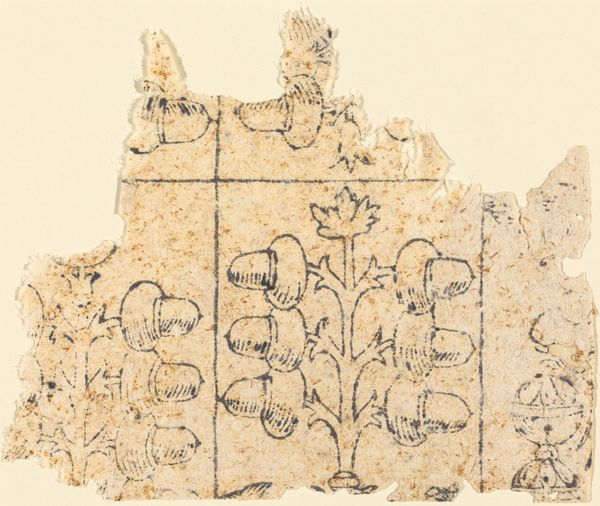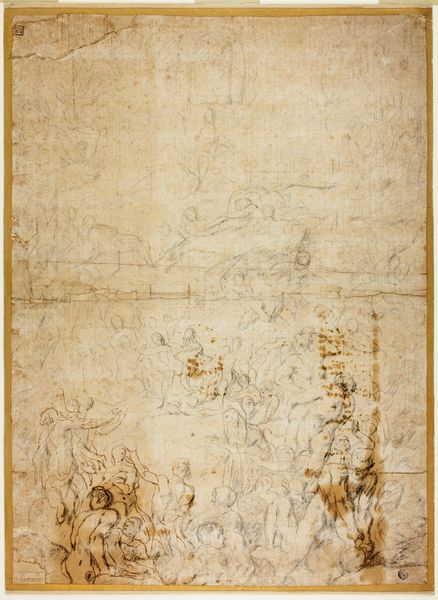
drawing, print, etching, paper, ink, engraving
#
pen and ink
#
drawing
#
narrative-art
# print
#
etching
#
etching
#
figuration
#
paper
#
ink
#
geometric
#
line
#
engraving
Copyright: National Gallery of Art: CC0 1.0
This anonymous playing card was probably made in Germany in the 1400s using ink on paper. Playing cards were luxury items at this time, and this design gives us a glimpse into the culture of the late medieval era. The card is divided into grids, each with drawings of acorns, as well as human and animal figures. These images create meaning through their cultural and historical associations. For example, the motif of acorns could have been chosen for its connection to the oak tree, which symbolized strength and longevity. Likewise, the figures of a man drinking, and two lions, may represent status, wealth, and leisure in the cultural context of the time. To interpret an object like this, we might consult medieval bestiaries to find out about the symbolic meaning of animals, or hunting manuals that tell us about the significance of the forest. The meaning of art is contingent on its social context.
Comments
No comments
Be the first to comment and join the conversation on the ultimate creative platform.
